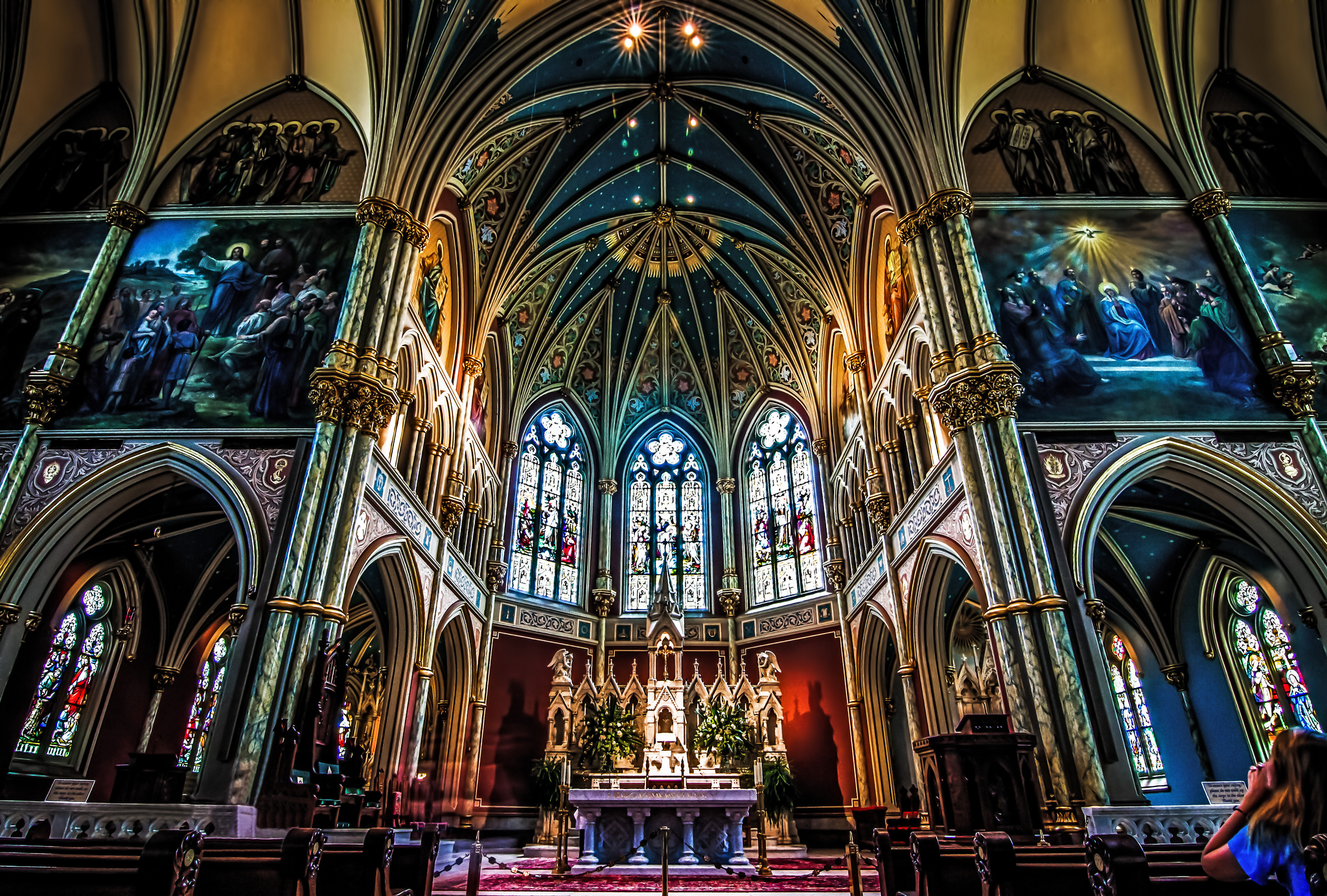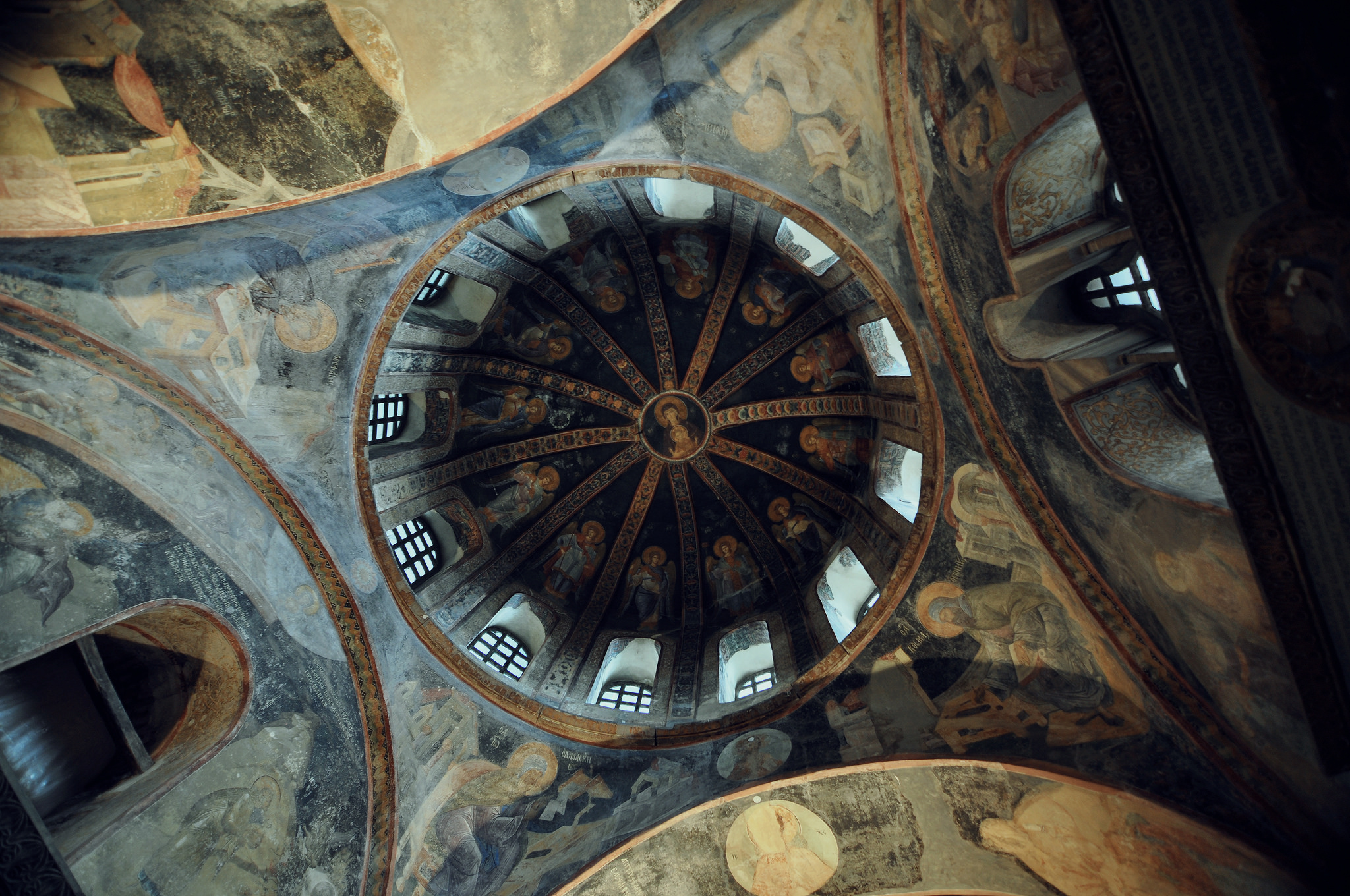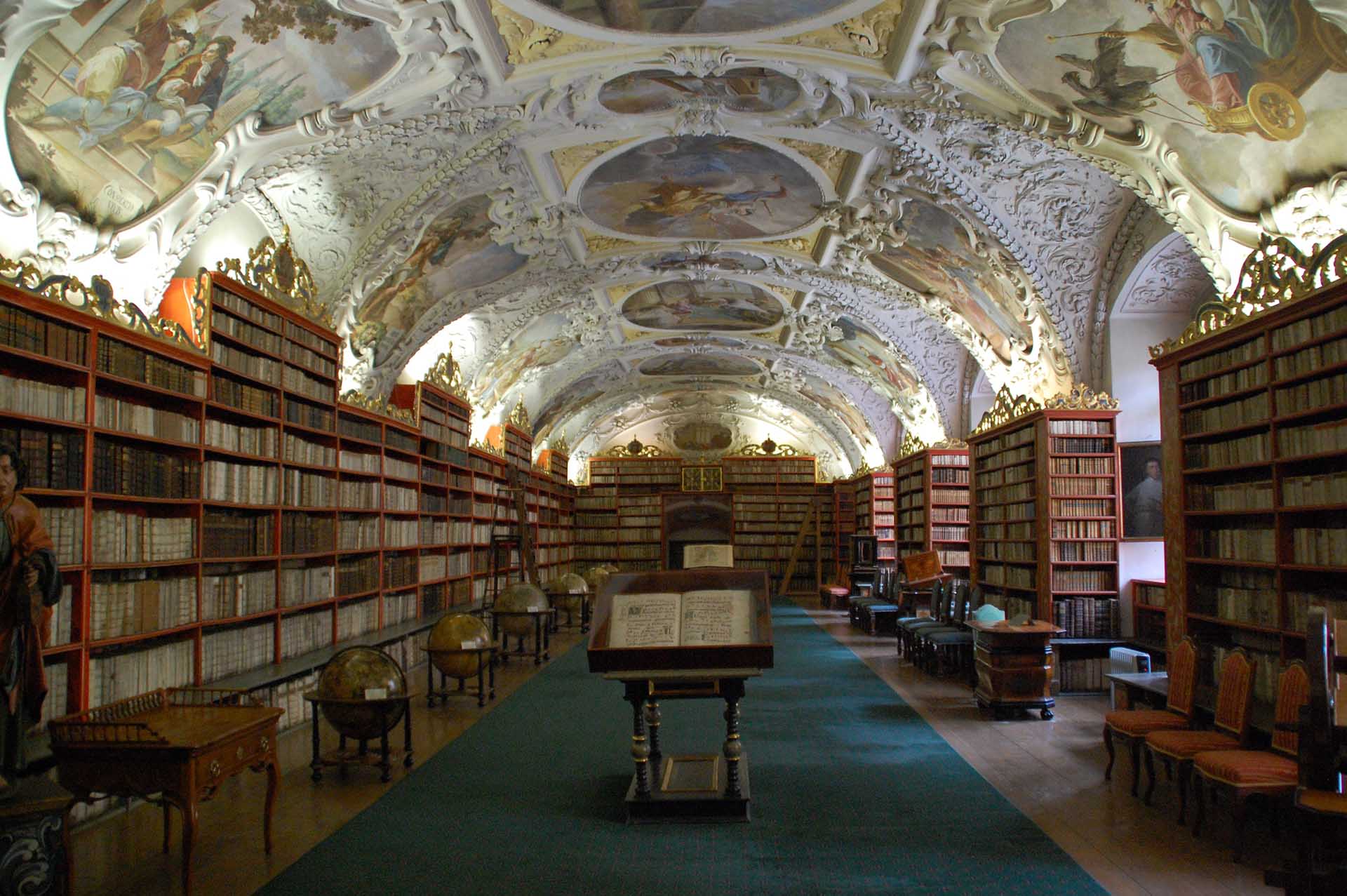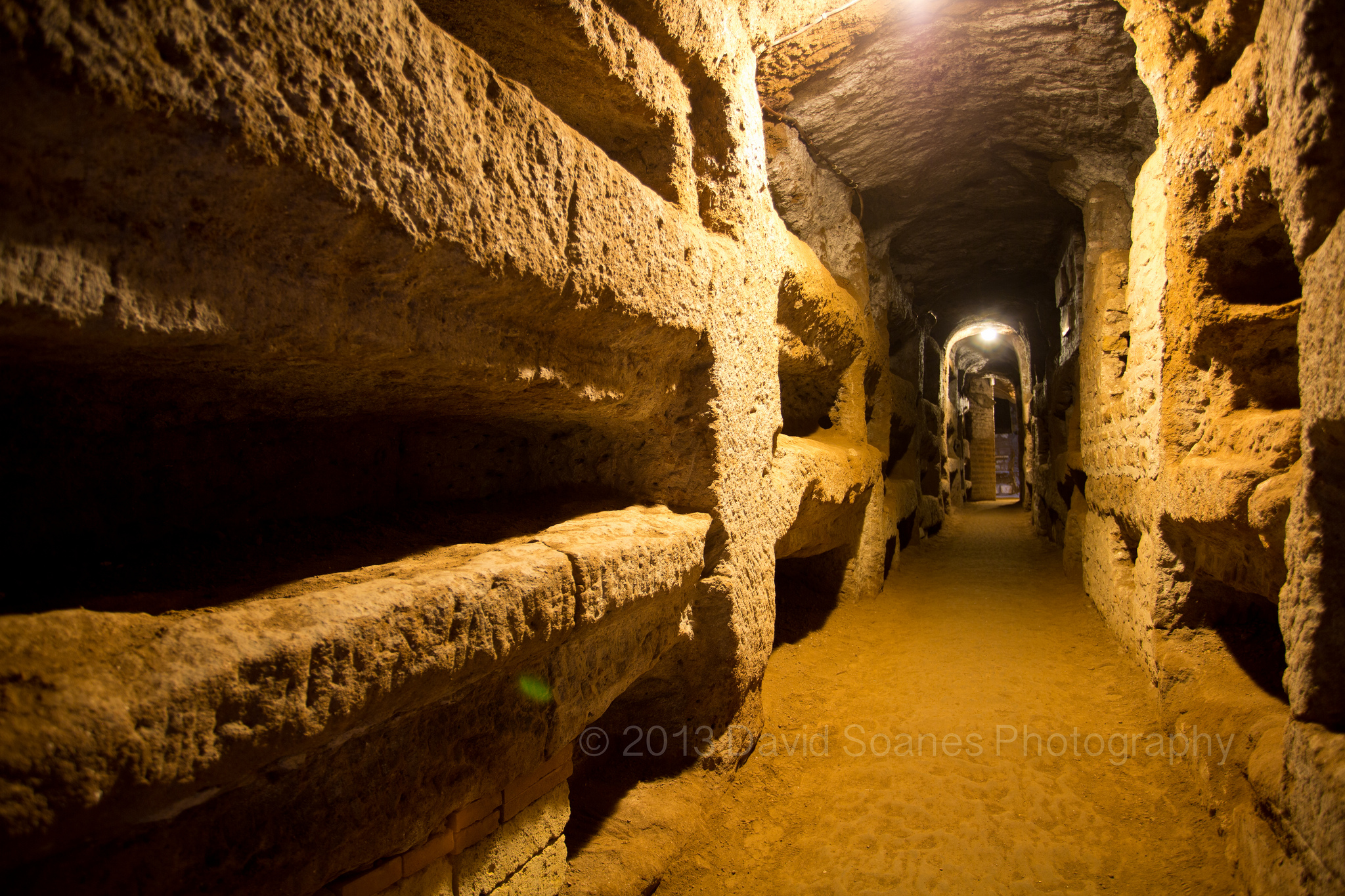+Our Lady of Ransom+
Some have objected that the term abomination of desolation does not necessarily refer to Antichrist and therefore the use of this phrase by Pope Paul IV in his bull Cum ex Apostolatus Officio is not a true interpretation of this Scripture phrase. In the next few blogs that will be posted here, the importance of understanding the meaning of these distinctions will be demonstrated. Catholics cannot be ignorant of the truths so necessary to understanding the current world situation today and its relation to their faith. As we draw closer to the culmination of the events that surely must be precipitating either the end proper or some worldwide disaster, no one can afford to any longer believe the fairy tales that some earthly force will deliver us; we alone are the captains of our own souls. Below please find the answer to this important question according to Catholic sources.
St. Jerome
The best source of information on this topic is St. Jerome, who according to the Catholic Encyclopedia “was very careful as to the sources of his information… The Biblical knowledge of St. Jerome makes him rank first among ancient exegetes.” St. Jerome wrote as follows on the abomination: “It is possible to apply this text easily to either the Antichrist, to the statue of Caesar which Pilate placed in the Temple or even to the equestrian statue of Hadrian, which down to this present day stands on the very site of the holy of holies. In the Old Testament, however, the term abomination is applied deliberately to idols. To identify it further, ‘of desolation,’ is added to indicate that the idol was placed in a desolate or ruined temple. The abomination of desolation can be taken to mean as well every perverted doctrine. When we see such a thing stand in the holy place, that is in the Church and pretend it is God, we must flee…,” (Breviary Lesson for the 24th and Last Sunday after Pentecost).
The value and the amazing utility of this phrase, as explained by St. Jerome, is that it expresses several meanings, all of which correspond to the behavior and person of Antichrist and fit the actions of Paul 6 to a “T.” Other commentators concur with St. Jerome. Commenting on the term abomination of desolation in the Catholic Encyclopedia, Francis Gigot writes: “While most commentators regard the first ‘shíqqû,’ usually rendered by ‘abomination,’ as designating anything (statue, altar, etc.) that pertains to idolatrous worship, others take it to be a contemptuous designation of a heathen god or idol. Again, while most commentators render the second ‘shômem’ by the abstract word ‘desolation,’ others treat it as a concrete form referring to a person, ‘a ravager,’ or even as a participial known meaning ‘that maketh desolate.’
“After studying the picture of Antichrist in St. Paul’s Epistle to the Thessalonians, one easily recognizes the ‘man of sin’ in Daniel 7:8, 11, 20, 21, where the Prophet describes the ‘little horn.’ A type of Antichrist is found in Daniel 8:8 sqq., 23, sqq., 11:21-45, in the person of Antiochus Epiphanes. Many commentators have found more or less clear allusions to Antichrist in the coming of false Christs and false prophets (Matthew 24:24; Mark 13:6, 22; Luke 21:8), in the ‘abomination of desolation,’ and in the one that ‘shall come in his own name’ (John 5:43; Catholic Encyclopedia, A.J. Maas). Both these articles make it clear that the abomination has been identified with Antichrist, and who else has ravaged the Church, propagated heresy and made Her desolate if not Paul 6 and the V2 usurpers?
St. Bernard
In the Catholic Encyclopedia article on Antichrist we read that: “Antichrist simulates Christ, and the Pope is an image of Christ, [so] Antichrist must have some similarity to the Pope, if the latter be the true Vicar of Christ.” This was certainly expressed in the writings of St. Bernard of Clairvaux, Doctor of the Church, and this allusion to a false pope as the abomination and Antichrist pre-dated Pope Paul IV. St. Bernard, a Doctor of the Church, was the champion of Pope Innocent II. Innocent later recovered the papacy from antipope Anacletus, who for several years occupied the papal see in Rome. We find in St. Bernard’s letters the following:
“Whether we like it or not, the words of the Holy Ghost must sooner or later have their fulfillment and the revolt predicted by the Apostle (2 Thess. 2:3) must come to pass. ‘Nevertheless, woe to that man by whom it cometh; it were better for him if that man had not been born,’ (Matt. 18:7; 26:24). Who is this antipope but the ‘man of sin’ (2 Thess. 2:3)… That beast of the Apocalypse, to whom has been given a mouth speaking blasphemy and power to wage war against the saints (Apoc. 13:5-7) “He has seated himself in the Chair of Peter…The holy place…he covets, not for its holiness, but for its height. He has, I say, got possession of the holy place [but]…not through the merit of his life. The election whereof he boasts is buta cloak for his malice. To call it an election at all is an impudent lie…”
In another letter he writes: “Behold, Innocent, the Christ, the anointed of the Lord, is ‘set for the fall and resurrection of many’ (Luke 2:34). For they that are of God willingly adhere to him, while opposed to him stand Antichrist and his followers. We have seen the ‘abomination of desolation standing in the holy place,’ (Matt. 24: 15), to obtain which the antipope ‘burned with fire the sanctuary of God’ (Psalm 73: 7). He persecutes Innocent and hence all innocence…” (The Life and Teaching of St. Bernard, Ailbe J. Luddy, O. Cist., 1927). Clearly St. Bernard identifies the Holy Place with the See of Peter, nothing else. In this he simply follows St. Jerome. Why would Paul IV deviate from these two great doctors?
The Council of Florence
The following was taken from the Council of Florence, held in Florence, Italy from 1438-1447, a little over 100 years before the reign of Pope Paul IV. The Council was a continuation of the Council of Ferrara, and that council in turn was a continuation of the Council of Basel, in Switzerland. It was convoked in 1431 by Pope Martin V and in 1440 condemned the reign of Antipope Felix V (Duke Amadeus of Savoy). Clearly the idea of an antipope or false pope as the incarnation of Antichrist was not limited to the letters of St. Bernard, as evidenced by excerpts from the council below.
“With the approval and help of this sacred ecumenical council, avenge with condign penalties this new frenzy which has become inflamed to your injury and that of the holy Roman church, your spouse, and to the notorious scandal of the whole Christian people. By the authority of almighty God and of the blessed apostles Peter and Paul and by your own authority, remove and separate from God’s holy church, by a perpetual anathema, the aforesaid wicked perpetrators of this prodigious crime and their unfortunate heresiarch and veritable antichrist in God’s churchtogether with all their supporters, adherents and followers and especially his execrable electors or rather profaners.
“For our part, as soon as we were aware from the reports of trustworthy people that so great an impiety had been committed, we were afflicted with grief and sadness, as was to be expected, both for the great scandal to the church and for the ruin of the souls of its perpetrators, especially Amadeus that antichrist whom we used to embrace in the depths of charity and whose prayers and wishes we always strove to meet in so far as we could in God.Already for some time we had it in mind to provide salutary remedies, in accordance with our pastoral office, against an abomination of this sort.
“That within fifty days immediately following the publication of this letter, the antichrist Amadeus should cease from acting anymore and designating himself as the Roman pontiff and should not, in so far as he can, allow himself to be held and called such by others, and should not dare hereafter in any way to use papal insignia and other things belonging in any way to the Roman pontiff; And that the aforesaid electors, or rather profaners, and adherents, receivers and supporters should no longer, either in person or through others, directly or indirectly or under any pretext, aid, believe in, adhere to or support the said Amadeus in this crime of schism…”
Pope Leo XIII
Then we have the prayers written by Pope Leo XIII, reportedly following a frightening vison of demonic activity throughout the world; this happened sometime before 1886. On September 25, 1888, Pope Leo XIII approved a prayer to St. Michael the Archangel with a 300 days indulgence that was at some point included in The Raccolta. The passage from this prayer pertinent to what is being discussed here reads: “In the Holy Place itself, where has been set up the See of the most holy Peter and the Chair of Truth for the light of the world, they have raised the throne of their abominable impiety, with the iniquitous design that when the Pastor has been struck, the sheep may be scattered.”
Two years later, Pope Leo XIII approved a new, longer prayer, “Exorcism against Satan and Apostate Angels,” including the 1888 prayer, which served as a sort of preamble to a series of exorcism prayers. These prayers were later appended to the Roman Ritual. This prayer eventually disappeared from the Raccolta and some Traditionalists claim it referred not to any infiltration of the Holy See, but to political events occurring at the time. It was removed, they said, because the pope was in negotiations with certain political powers and hoped to resolve the matter. While this could be true, no sources are cited to verify it. Nor can it be denied that it could just as easily have referred to a danger to the pope and his retinue, with Mariano Rampolla then Pope Leo XIII’s secretary of state. Why else include this prayer in an exorcism, of all things, if this was not a serious matter? A pope would not allow some transient political events to influence the content of a sacramental rite.
Pope Paul IV merely confirmed the idea of a false pope as Antichrist and Antichrist as the abomination, following St. Jerome and St. Bernard. Pope Leo XIII utilized the same language to describe what was happening to the Church during his pontificate. We cannot dispute the outcome; what they described is precisely what we have witnessed.
Paul IV’s usage of the abomination of desolation
“Whereas We consider such a matter to be so grave and fraught with peril that the Roman Pontiff, who is Vicar of God and of Jesus Christ on earth, holds fullness of power over peoples and. kingdoms, and judges all, but can be judged by no one in this world — (even he) may be corrected if he is apprehended straying from the Faith. Also, it behooves us to give fuller and more diligent thought where the peril is greatest, lest false prophets (or even others possessing secular jurisdiction) wretchedly ensnare simple souls and drag down with themselves to perdition and the ruin of damnation the countless peoples entrusted to their care and government in matters spiritual or temporal; and lest it befall Us to see in the HOLY PLACE the abomination of desolation spoken of by Daniel the prophet, We wish, as much as possible with God’s help, in line with our pastoral duty, to trap the foxes that are busily ravaging the Lord’s vineyard and to drive the wolves from the sheepfolds, lest We seem to be silent watchdogs, unable to bark, or lest We come to an evil end like the evil husbandmen or be likened to a hireling.”
Given the content and recurring condemnations of Cum ex Apostolatus Officio, Pope Paul IV’s intent in issuing this bull is unmistakable. We see above that no less than St. Jerome interprets “the holy place” as the Church itself. And St. Jerome is the ultimate authority on scriptural interpretation. As for the abomination of desolation, the Catholic Encyclopedia has confirmed that commentators understand it as referring to Antichrist, although as St. Jerome also says it can mean “every perverted doctrine,” as well as idol worship. This would include:
“Bread idols, bread of lying, bread of wickedness, wheat bringing forth thorns, profitless wheat, vine without grapes, wine of iniquity, bitter wine, the wine of the condemned, the two iniquities [bread and wine], a strange god, idols without life, an idol moving the God of the Eucharist to jealousy, altars unto sin, a sin graven on the horns of the altar, sin of the sanctuary, unacceptable holocaust, a conspiracy, vain sacrifices, throne of iniquity, sin of the desolation (Dan. 8:13), falsehood personified, a lying vision, the abomination of desolation, (Dan. 11:31)” (Fr. Kenelm Vaughn’s Divine Armoury)” So both the person and the idol worshipped is included in the same phrase used by Daniel as biblical usage elsewhere demonstrates.
Paul IV is concerned with the persons perpetrating the crime. The reason for this is clear — he realizes that souls will be dragged down into hell if these people are not recognized as imposters and removed from office. He clearly sees that the best way to prevent perversion of the faithful is to remove the wolves from the sheepfold before they can devour the sheep. There can be no idol worship ever set up if there is no one to institute it. It is obvious that he believes the abomination to be heresy, and only a heretic could introduce idol worship. Pope Paul IV is careful to explain that a pope could never become a heretic but could only appear to become one owing to commission of it prior to election, invalidating the election.
The exception would be that a pope [erring in his private capacity] could be corrected, as the pope says above, (but not removed unless he refused to accept correction). But one who publicly spoke or otherwise disseminated heresy is a different matter. Paul IV distinguishes as follows: “Further, if ever at any time it becomes clear that any Bishop, even one conducting himself as an Archbishop, Patriarch, or primate; or any Cardinal of the aforesaid Roman Church, even as mentioned, a Legate; or likewise any Roman Pontiff before his promotion or elevation as a Cardinal or Roman Pontiff, has strayed from the Catholic Faith or fallen into some heresy, then his promotion or elevation shall be null, invalid and void.”
So here we see that one appearing to be a Roman Pontiff who was a heretic before his elevation or had strayed from the faith in some way is considered never to have obtained the office. If we now consider the abomination of desolation as the pope uses it, we can observe the following. 1) This is a definition of that term, since the Protestants at that time were contending a validly elected pope could become a heretic, i. e., Antichrist. It is not conceivable that Paul IV was not aware of this or did not have it in mind when writing the bull. In the preamble to his bull, the Pope states he intends to drive away “those who [are] corrupting the sense of the Holy Scriptures with cunning inventions.”2) It is a definition because prior to that time the holy place had been designated by some commentators to mean the Temple in Jerusalem and by others the Church.
The abomination had also been primarily interpreted as a false sacrifice or idol worship, not heresy per se. 3) Certain commentators limited application of the abomination to the time of the Jewish antichrist Antiochus, not extending it to the time of Antichrist as prophesied in the New Testament. Pope Paul IV definitely extended it to our own time. A papal definition is rendered, according to Msgr. J. C. Fenton and Denzinger’s Sources of Catholic Dogma, when some matter that has been in dispute is addressed by the pope; that matter is then no longer up for discussion. We must remember how the doctrines regarding the Holy Mass and the papacy both were being attacked by Luther and other Protestants during Pope Paul IV’s reign. The pope had good reason to believe that if a heretic of the Lutheran persuasion ever secretly ascended to the papacy, the Mass could be endangered. And as we see today, Paul IV had good reason to fear that just such a thing could happen.
When in doubt, consult Can. 18
In a case of doubt, for those questioning Pope Paul IV’s intention regarding his mention of the abomination of desolation, Canon 18 requires that Catholics first resort to parallel passages of the Code, if any; to the end and circumstances of the law and to the mind of the legislator. Here it is most important to consult the end and circumstances of the law. Therefore, it is necessary to delve into the history behind the bull, Cum ex Apostolatus Officio, which we have done before but which will be useful to repeat here. Pope Paul IV suspected Cardinal Giovanni Morone of heresy, something to do with the misinterpretation of Scripture and his sympathies with the Lutherans. Morone also reportedly had been holding meetings behind the pope’s back to promote himself as Paul IV’s successor even prior to the pope’s death.
This prompted Paul IV to write Cum ex. Morone was tried for his heresy and imprisoned. But when Paul IV died, he was back in the running for the papacy. He ran full force, however, into Cardinal Ghislieri, the future Pope St. Pius V. The historian Hergenrother, in his “The History of the Popes” reports that Morone’s campaign as papabili was “quashed by the intervention of Cardinal Ghislieri, who pointedly remarked that Morone’s election would be invalid owing to the question mark hanging over his orthodoxy,” (emph. mine). And this is the opinion not only of a great Pope, but of a great saint.
We also have the following quote from Paul IV himself, provided by author Glenn Kittler: “If I discovered that my own father was a heretic, I would gather the wood to burn him,” Paul IV said. During the trial of Cardinal Morone, Kittler says that Paul IV “decreed that any cardinal accused of heresy could not be elected pope,” (The Papal Princes, pg. 254). And there is to be no exception concerning those who deviated from the faith “secretly” before their election; that is, some heresy that was committed pre-election but became public only after the election. They too are automatically deposed. Here we have a perfect reflection of the mind of the lawgiver concerning an election, which today is worth its weight in gold.
In response to Morone’s attempt to promote himself as pope, Paul IV also penned the apostolic constitution Cum secundum Apostolum sometime in 1559. The constitution decreed extreme penalties against those who discuss the election of the future pope, behind the back and without permission of his predecessor while he is still alive, a crime now visited by Pius XII with the highest possible excommunication on the books: a latae sententiae penalty reserved in a most special manner to the Holy See. (This bull is listed in the footnotes to Pope Pius XII’s 1945 constitution Vacantis Apostolicae Sedis.) This means that only the pope can dispense from such a censure.
As explained in a previous blog, Pope Paul IV was a very strict disciplinarian. He gave no quarter where heresy or the honor of the Church was concerned. Pope Paul III appointed him to head the Roman Inquisition after Paul IV himself suggested it be convened. His whole career seems to have been devoted to stamping out heresy at all costs, and given the terrible toll exacted by the Protestant Reformation, who can wonder that this would be so? His legacy on this topic is enshrined in Canon Law, with Cum ex… cited as a footnote in several canons, nearly all involving heresy. The articles below in the Archives section of the site chronicle this.
- Cum Ex Apostolatus Officio: Infallible & Retained in the Code (PDF)
- How “Cum Ex…” Is Retained In the Code (PDF)
- “Cum Ex…” and Ecclesiastical Discipline
- Doctrinal Conclusions Drawn From “Cum Ex…”
Finally, there is this regarding the interpretation of the law from Rev. Amleto Cicognani’s Canon Law:
- Clear words admit no interpretation nor conjecture of the will.
- General words are to be generallyunderstood, (“excommunicated”).
- Where the law does not distinguish, neither are we to distinguish.
- An indefinite expression is equivalent to one that is universal.
- The words of law also should be considered in their context, (“except,” “any just reason”).
- Any argument made should not be made outside the heading of the statute, (i.e., it should remain within the bounds of the subject being discussed under the heading of each section insofar as is possible. The heading for the statutes derived from Pope Paul IV’s bull involves censures and excommunication for heresy.)
- Where the words are not ambiguous, they need no interpretation.
(For more on this topic visit https://www.betrayedcatholics.com/articles/a-catholics-course-of-study/canon-law/who-interprets-the-law/)
Nothing in Pope Paul IV’s law is unclear or ambiguous; ergo, it needs no interpretation. As proofs go, Canon Law tells us it is absolute and no other proof against it is admissible. We have no reason whatsoever to believe Pope Paul IV would not follow the teaching of St. Jerome and St. Bernard, also the Council of Florence and other councils, in his bull. The abomination of desolation is any high-ranking heretic who purports to hold an ecclesiastic (or even secular) office and publicly teaches heresy. This includes the pope. We know he is speaking, however, of the pope in this passage because he refers to him standing in the Holy Place, that is the See of Peter, as St. Bernard teaches. And this can be gleaned from the circumstances of his law regarding Cardinal Morone.
Conclusion
Many of the controversies concerning the times in which we live can be answered by asking the following question: Who is prophesied to take away the Continual Sacrifice? Daniel tells us it is the Antichrist of our day. Will anyone deny that the Sacrifice has indeed been taken away by John 23 and Paul 6? It would be difficult to find even a Traditionalist who would deny this. But as is so tellingly the case with all these Traditionalists and Novus Ordo types, they fail to complete the logical consequences of what they believe and follow them to the very end. Only Antichrist could have abolished the Sacrifice. It is the unanimous opinion of theologians, as stated by Henry Cardinal Manning, that the Sacrifice will indeed cease:
“The Holy Fathers who have written upon the subject of Antichrist and the prophecies of Daniel — all of them unanimously — say that in the latter end of the world, during the reign of Antichrist, the Holy Sacrifice of the altar will cease.” And the Council of Trent has determined that when the Fathers unanimously agree on a point of Holy Scripture, as explained above, they cannot be mistaken.
We find in St. Paul that Antichrist will be dispatched as follows: “And then that wicked one shall be revealed whom the Lord Jesus shall kill with the spirit of his mouth; and shall destroy with the brightness of His coming, (2 Thess. 2: 8).” In other words, as Rev. Haydock explains, it will be an easy thing to take out the Son of Perdition. It is no coincidence, then, that Montini died on the day that he did. According to the reports of the Swiss guards, as related by John Parrot in the 1990s, he was tormented days before his death, and cries of despair were heard coming from his room; his face reportedly became so contorted no one could bear to look at him. His agony was ended on the feast of the Transfiguration. Holy Scripture describes the appearance of Christ during the Transfiguration as follows: “His face did shine as the sun, and His garments were white as snow” (Matt. 17: 2). This fact is examined at length by Francis Panakal in his work, The Man of Sin. It is something at least to ponder, for often the dramatic fulfillments we seek today can be explained in less obvious ways. We need only think of the Apostles, who missed so many of the meanings of Christ’s parables. Yet regarding the abomination of desolation Christ advises, “Let him who reads understand.”






Another very instructive and informative article! It is indeed beyond dispute that the Abomination of Desolation is the Antipope Antichrist. My only question is, could the title THE Antichrist be applied to all the Antipopes of our time? I’m thinking yes, but I cannot say for sure.
Dear Robert,
Satan is ever the ape of God. His system must resemble that established by Our Lord in order to restore the heavenly glory he believes was stolen from him and elevate himself to God’s equal or superior.
Christ founded His Church upon one man, Peter the rock. Satan founded his church also on one man, Giovanni Montini, Paul 6. Peter was to have perpetual successors who would inherit all the attributes Christ bestowed on St. Peter — authority, infallibility, indefectibility; the usurpers succeeding Paul 6 possess all his same power and authority, granted by Satan. This succession may be reflected in Apoc. 13:3, which several commentators attribute to the rebirth of pagan Rome. One meaning of the word “anti” refers to a king who reigns during an interregnum.
But St. John reveals to us in the Apocalypse that the reign of these usurpers will not be perpetual. Christ Himself will destroy Antichrist and his system, operated through secret societies throughout the world, and Rome will be destroyed, just as Christ predicted that the Temple of Jerusalem would be leveled to the ground. We may see other manifestations of this system — both spiritual and political — before it is destroyed, but God will not be mocked forever.
Thank you for this new scientific article. In response to a question from Robert Robbins this is also a very good article. https://www.betrayedcatholics.com/our-place-in-apocalyptic-time/ .
I had never heard of Montini’s death and causal coincidence before, which is also interesting.
I agree that Montini was the Antichrist as the central figure. John Paul II was one of those who carried the spirit of the Antichrist to the fullest, strengthening the teaching of Paul VI. Most Holy Family Monastery believes that antipope John Paul II was the Antichrist and the sixth king (beast) in the book of Apocalypse. I do not agree with them in part that John Paul II was the Antichrist in the central sense. I believe that he was the Antichrist in the sense of succession, a figure who brought the teachings of the Antichrist to the world in an all fulfilling way and in all publicity. I also see the logic in their explanation that he was a beast (one of the heads) who was wounded in the book of Apocalypse. In my opinion, the conclusion would be that John Paul II was the beast of the Antichrist in the context of the book of Revelation as one of the meanings.